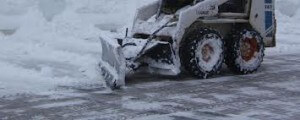 A recent Appeals Court decision serves as a reminder of the many factual issues that may become important for lawyers to consider when bringing a claim for injuries suffered on a commercial or business property. Navarro v. Bond involved the intersection of two legal principles: the application of the worker’s compensation statutes to injuries suffered by an employee while at work, and the limited responsibility of a commercial landlord for injuries suffered on its property.
A recent Appeals Court decision serves as a reminder of the many factual issues that may become important for lawyers to consider when bringing a claim for injuries suffered on a commercial or business property. Navarro v. Bond involved the intersection of two legal principles: the application of the worker’s compensation statutes to injuries suffered by an employee while at work, and the limited responsibility of a commercial landlord for injuries suffered on its property.
The plaintiff in Navarro was injured when she fell in the icy parking lot of her workplace. The premises were leased to her employer, Bond Brothers, Inc., and owned by a related family trust, Spring Realty. The plaintiff’s employer, Bond Brothers, had always been responsible for general maintenance and snow removal at the property. It received no payment from the nominal landlord, Spring Realty, for these services. There was no evidence that Spring Realty retained any control over the leased property.
The worker’s compensation statute compensates employees for injuries suffered at work, regardless of whether the employer was negligent, but provides very limited recovery of damages compared to normal tort law. When an employee receives worker’s comp, she cannot sue the employer for tort damages. This law limited Ms. Navarro’s recovery unless she could show that some other person or entity was responsible.
The logical entity would be the owner of the property–but the liability of a commercial landlord is rather limited. As the Navarro case reminds us, a commercial landlord is liable for injury on the leased property only if 1) it has a contractual obligation to repair or maintain the property, or 2) the injury occurs in a common area over which the landlord retains some measure of control. Since Spring Realty had nothing to do with the maintenance or operation of the business property, it had no liability for injuries.
The question of the landlord’s liability in Navarro became important because the plaintiff could not recover tort damages from her employer, but it may also arise in other contexts. When the tenant business is uninsured or poorly insured, it may be important to look for other responsible parties. When the injury occurs in a common area such as a hallway or parking lot, it may be difficult to figure out whether the landlord, the tenant or both, were responsible for taking care of that area. The issue is more complicated where there are multiple business tenants.
These issues can make a relatively simple “slip and fall” case more complicated, as it may require investigation to learn about the relationships of the parties and their relative responsibilities. The situation can become even more difficult where management companies, maintenance or cleaning contractors, and other third parties are involved.
